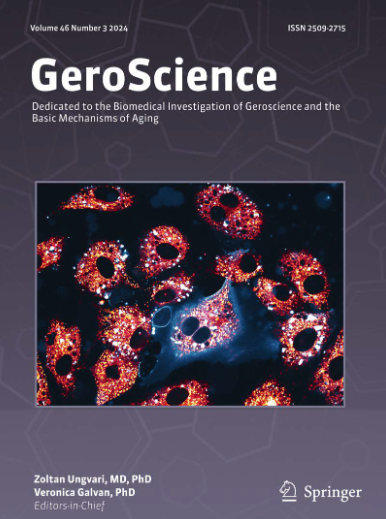使用脑电图衍生数据预测COVID-19危重患者的谵妄:一种机器学习方法。
IF 5.3
2区 医学
Q1 GERIATRICS & GERONTOLOGY
引用次数: 0
摘要
谵妄是危重患者,特别是SARS-CoV-2感染患者中一种严重而常见的并发症,导致发病率和死亡率增加。早期识别高危患者对于及时干预和改善预后至关重要。本前瞻性观察队列研究探讨脑电图(EEG)结合机器学习(ML)模型预测SARS-CoV-2感染危重患者谵妄的潜力。采用逐步建模方法,从独立分析特定EEG变量开始,评估其预测价值。随后,使用70例患者(31例谵妄,39例无谵妄)的数据建立了三种ML模型:两种模型仅依赖脑电图数据,而第三种模型综合了人口统计学、临床、实验室和脑电图数据。另一个模型分析了11例谵妄诊断前后的脑电图数据。几个脑电图特征被确定为谵妄的预测因素,增加的θ波活动是最一致的。最佳的纯脑电图模型曲线下面积(AUC)为0.733(灵敏度= 0.645,特异性= 0.692),预测效果中等。纳入人口学、临床和实验室变量可提高性能(AUC = 0.825,敏感性= 0.613,特异性= 0.795)。分析谵妄诊断前后脑电图特征的模型准确率最高(AUC = 0.950,灵敏度和特异性= 0.818),增强了基于脑电图的监测价值。基于脑电图的ML模型有望预测危重患者的谵妄,增加的θ活动被认为是一个关键的预测因素。然而,它们中等的AUC、敏感性和特异性表明需要进一步改进。本文章由计算机程序翻译,如有差异,请以英文原文为准。
Predicting delirium in critically Ill COVID-19 patients using EEG-derived data: a machine learning approach.
Delirium is a severe and common complication among critically ill patients, particularly those with SARS-CoV-2 infection, contributing to increased morbidity and mortality. Early identification of at-risk patients is crucial for timely intervention and improved outcomes. This prospective observational cohort study explores the potential of electroencephalography (EEG) combined with machine learning (ML) models for predicting delirium in critically ill patients with SARS-CoV-2 infection. A stepwise modeling approach was applied, starting with the independent analysis of specific EEG variables to assess their predictive value. Subsequently, three ML models were developed using data from 70 patients (31 with delirium, 39 without): two relied solely on EEG data, while the third integrated demographic, clinical, laboratory, and EEG data. An additional model analyzed EEG data before and after delirium diagnosis in 11 patients. Several EEG features were identified as predictors of delirium, with increased theta activity emerging as the most consistent. The best EEG-only model achieved an area under the curve (AUC) of 0.733 (sensitivity = 0.645, specificity = 0.692), indicating moderate predictive performance. Including demographic, clinical, and laboratory variables improved performance (AUC = 0.825, sensitivity = 0.613, specificity = 0.795). The model analyzing EEG features before and after delirium diagnosis achieved the highest accuracy (AUC = 0.950, sensitivity and specificity = 0.818), reinforcing the value of EEG-based monitoring. EEG-based ML models show promise for predicting delirium in critically ill patients, with increased theta activity identified as a key predictor. However, their moderate AUC, sensitivity, and specificity highlight the need for further refinement.
求助全文
通过发布文献求助,成功后即可免费获取论文全文。
去求助
来源期刊

GeroScience
Medicine-Complementary and Alternative Medicine
CiteScore
10.50
自引率
5.40%
发文量
182
期刊介绍:
GeroScience is a bi-monthly, international, peer-reviewed journal that publishes articles related to research in the biology of aging and research on biomedical applications that impact aging. The scope of articles to be considered include evolutionary biology, biophysics, genetics, genomics, proteomics, molecular biology, cell biology, biochemistry, endocrinology, immunology, physiology, pharmacology, neuroscience, and psychology.
 求助内容:
求助内容: 应助结果提醒方式:
应助结果提醒方式:


